Albariño is arguably Spain’s signature white grape. Mainly found in the wine growing region of Rías Baixas and nearby Portuguese region of Vinho Verde (where it’s known as Alvarinho), Albariño produces a light, crisp wine, famous for its salinity and zestiness.
While Albariño isn’t well known in Virginia, be prepared to hear a lot more about it. Virginia currently only has 34 bearing acres of Albariño, but it’s proven so popular that in the last several years another 27 acres have been planted. This makes it the fastest growing grape variety in the state by percentage of growth.
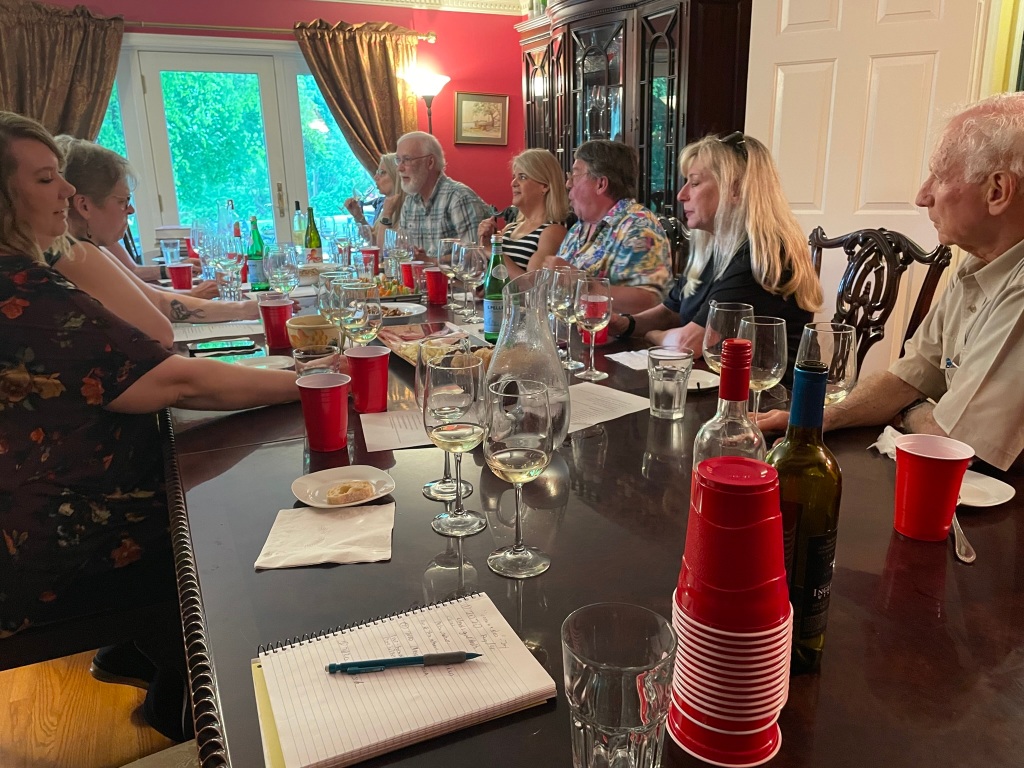
Virginia’s Albariños have also been racking up awards. Maggie Malick’s 2020 steel-fermented Albariño earned double gold in the San Francisco Chronical wine competition, and later went on to place as one of Virginia’s top-12 wines in the 2022 Governor’s Cup competition. Ingleside Vineyards has also earned a number of Gold medals for their Albariños in different Governor’s Cup competitions.


During a tasting of Governor’s Cup wines, Master of Wine and competition Director Jay Youmans asked rhetorically, “Why aren’t more Virginia wineries growing Albariño? Grows great, people like it, huge upside.”
“Albariño is a premium grape for us”, explained Mark Malick, winegrower at Maggie Malick Wine Caves. “It’s a smaller berry, which means about 25% less yield in comparison to most other grapes. But the smaller berries means more intensity of flavor.”
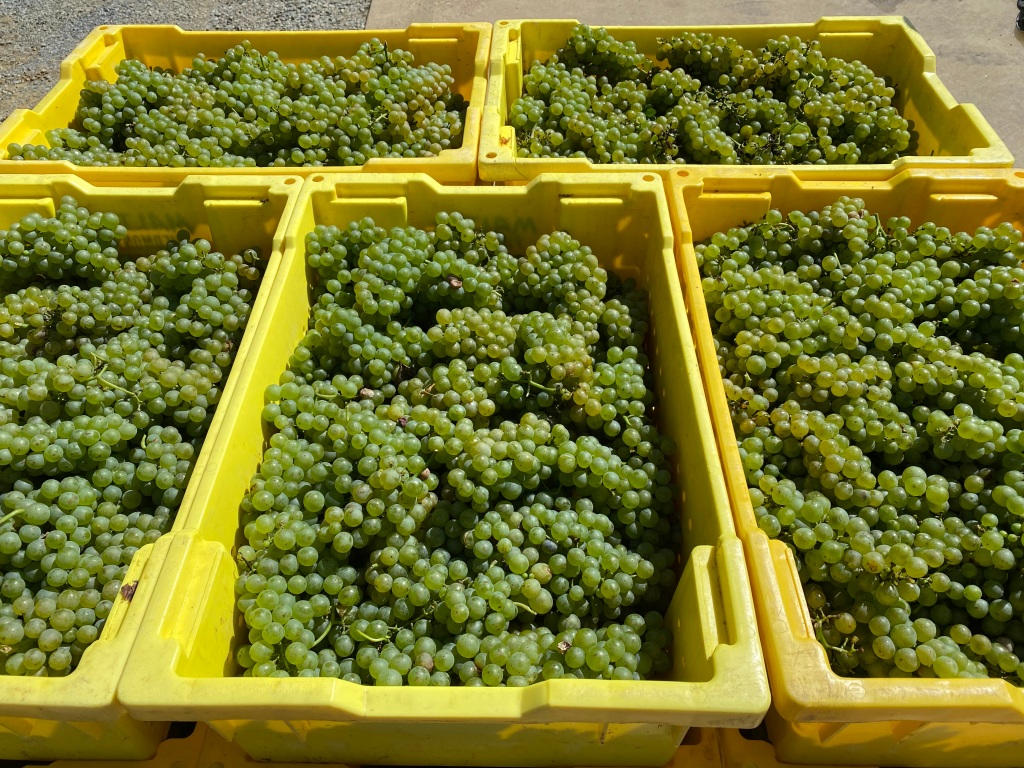
Mark Misch, former winemaker for Ingleside and current winegrower for Trump Winery, explained his view of Albariño’s appeal. “I think it’s a couple factors. Albariño is relatively new to the state so its newness makes it appealing. Not many people know what it should taste like either so we have a lot of wiggle room to make a “Virginia” style.”
To help discern if there is indeed a “Virginia style”, Mark and Maggie of Maggie Malick Wine Caves hosted an event where they shared 18 bottles of Albariño with a group of industry professionals, wine writers, and social media mavens. Most of these wines were from Virginia, but Maryland, Spain, Portugal, and Uruguay were also represented.
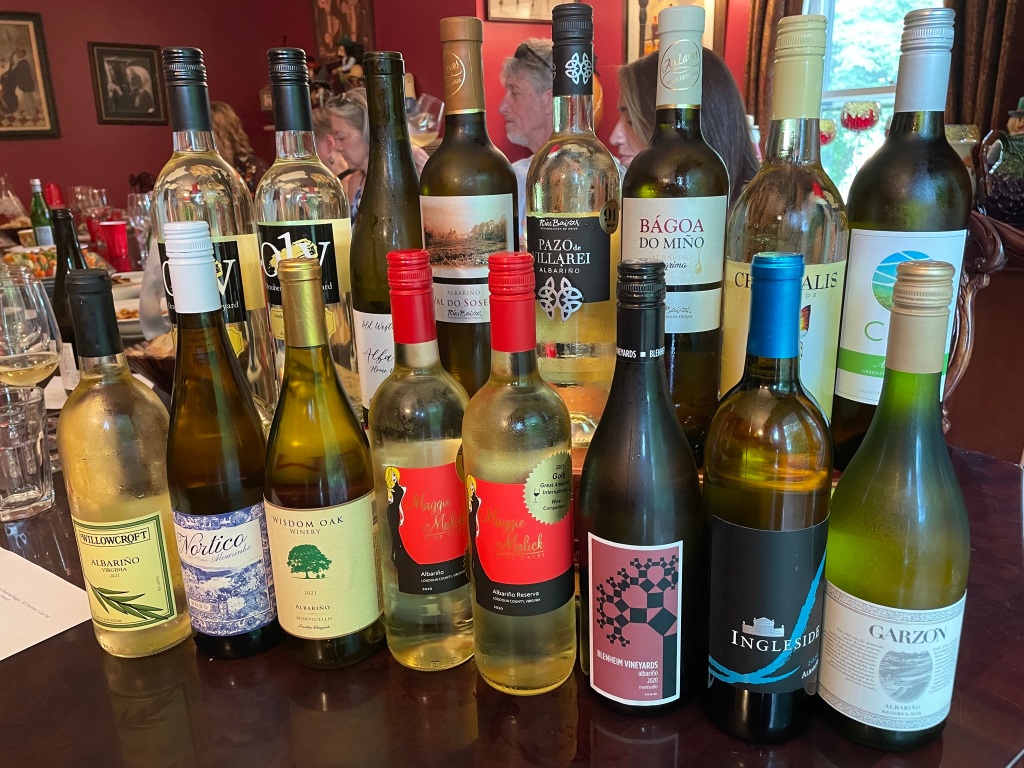
This group sampled 18 wines over six flights. To kick things off, we also had an excellent sparkling Albariño.
Flight 1:


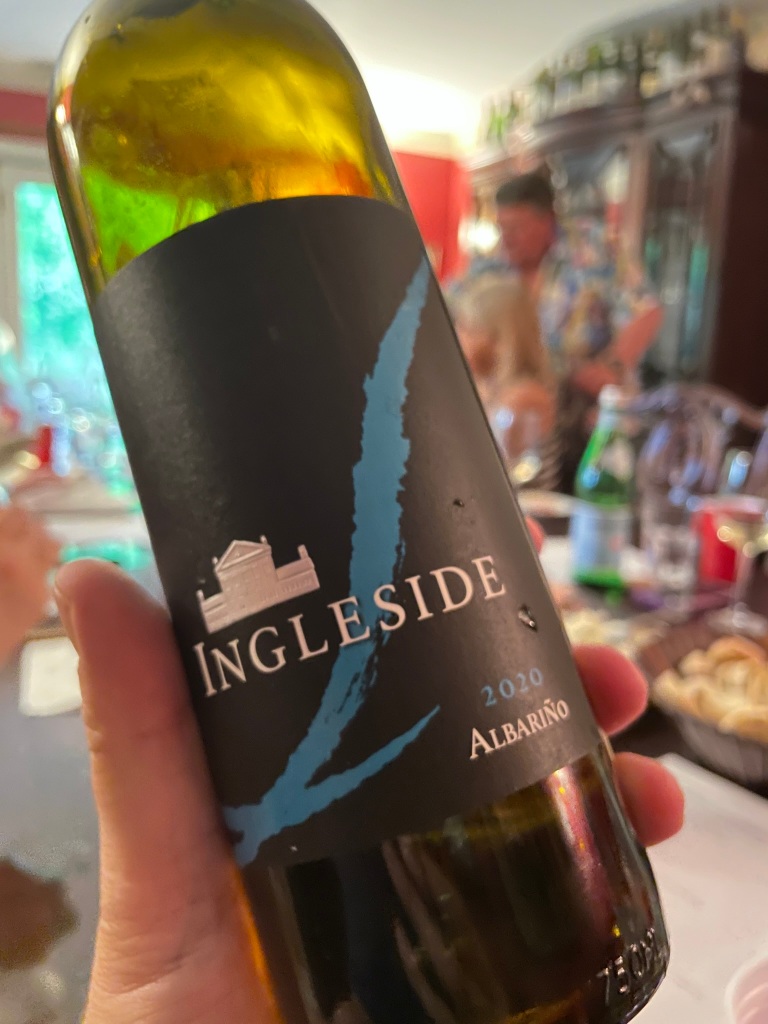
1. 2020 Maggie Malick (grown in Chesapeake Bay, Virginia, Northern Neck AVA): The grapes came from Ingleside but the wine was made by Maggie. Initially Maggie considered blending it with her own estate fruit, but ultimately decided she liked both wines on their own so she kept them separate.
The wine presented notes of ripe yellow peach, cantaloupe, and saline. Some participants described it as ‘classic’ in style, though still not quite an exact match for a Spanish wine. Clean finish, good depth.
During the judging of the 2022 Governor’s Cup, Jay Youmans described this wine as “ocean in a glass”. When wine blogger and Governor’s Cup wine judge Kathy Wiedemann first blind tasted it, she turned to Jay and said “One of those Albariños kicked-ass.”
2. 2020 Maggie Malick Reserva (grown and made in Loudoun, Virginia). While the fruit for this wine came from Maggie’s estate vineyard, the two couldn’t be more different despite being made by the same person. This was “Albariño on steroids”, explained Mark. Very fruit forward and intense. Notes of white peach and lime zest.
3. 2020 Ingleside (grown and made in Chesapeake Bay, Virginia, Northern Neck AVA): Stylistically-speaking this was closer to Rías Baixas than to Virginia. The wine was aromatic, with notes of lime, saline and melon, but absent the stone fruit qualities the others had.
The comparisons and contrasts of these wines really makes you question how much the final outcome can be attributed to the terroir vs the winemaker. The fruit for both the Ingleside and ‘regular’ Maggie Albariño both came from Ingleside Vineyards, and they had similar tasting descriptors.
Ripeness was a quality shared by Maggie’s Reserva and ‘regular’ Maggie’s Albariño, although their tasting profiles were very distinct. They also used different commercial yeasts.
All three were made in steel.
The favorites of this round were fairly evenly split between the two Maggie wines, with some favoring the finesse of the regular Albariño but others loving the power of the Reserva.
Flight 2:
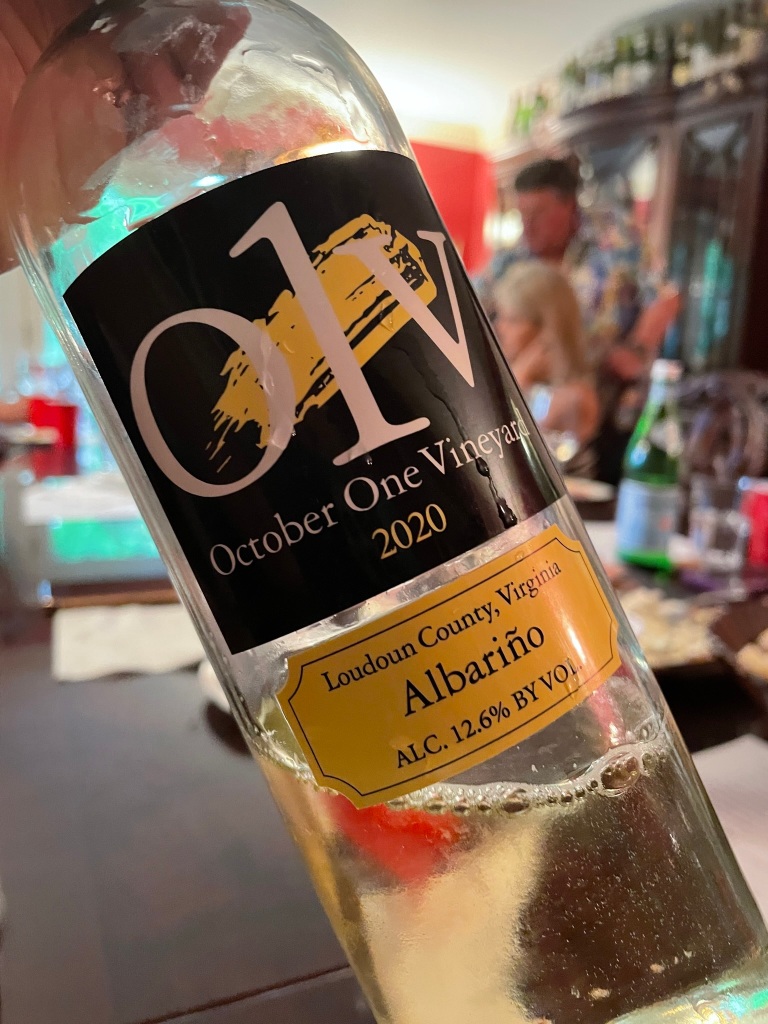

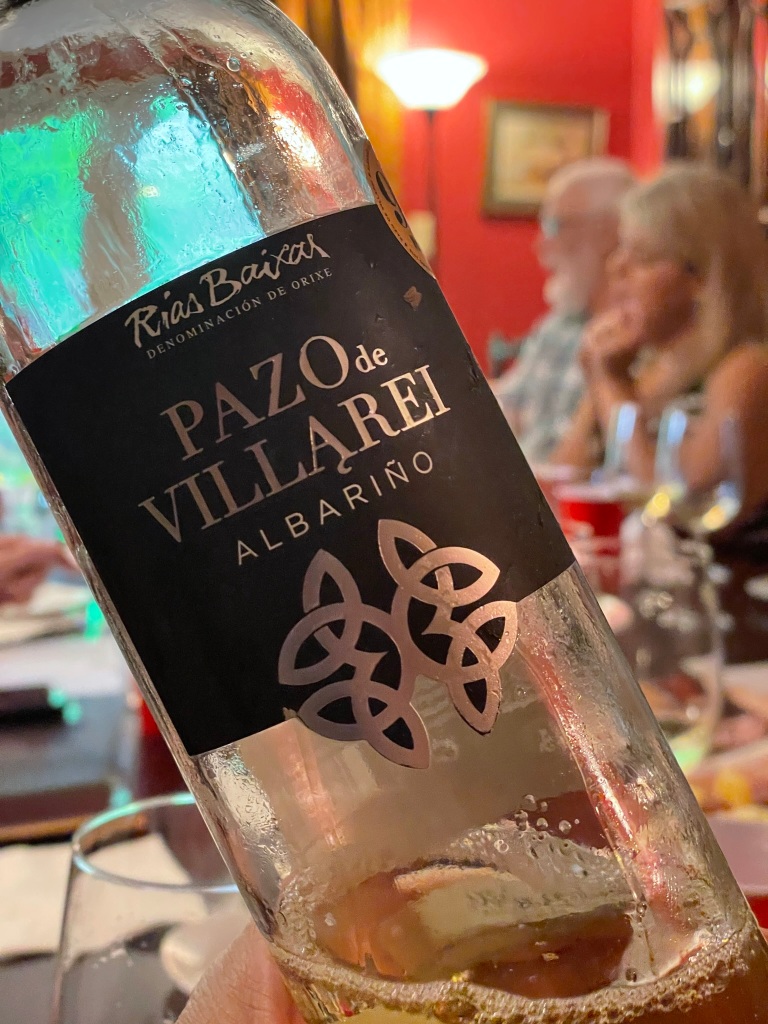
4. 2020 October One (grown and made in Loudoun, Virginia): According to owners Bob and Loree Rupy, this wine was made using whole cluster pressing. We found this process added more to the body. Many tasting notes were provided, ranging from yellow peach and stone fruit, all with a nice lemon zest. It had a slight amount of residual sugar, but was still a dry wine.
5. 2021 October One (grown and made in Loudoun, Virginia): This wine was also made using whole cluster pressing. The result was described as a “yellow peach explosion.” It was a little drier than the 2020, as well as more balanced and expressive. Overall, this bottle was the favorite of this round.
6. 2019 Bodegas Pazo de Villarei (grown and made in Salnes Valley, Rías Baixas, Spain): “Sancerre-like” was mentioned. The nose had some funk to it, almost like canned asparagus. It also went past ‘notes of saline’ to ‘full-on salty’. This started a trend of demonstrating how different the Spanish wines were from Virginia Albariños.
Flight 3:


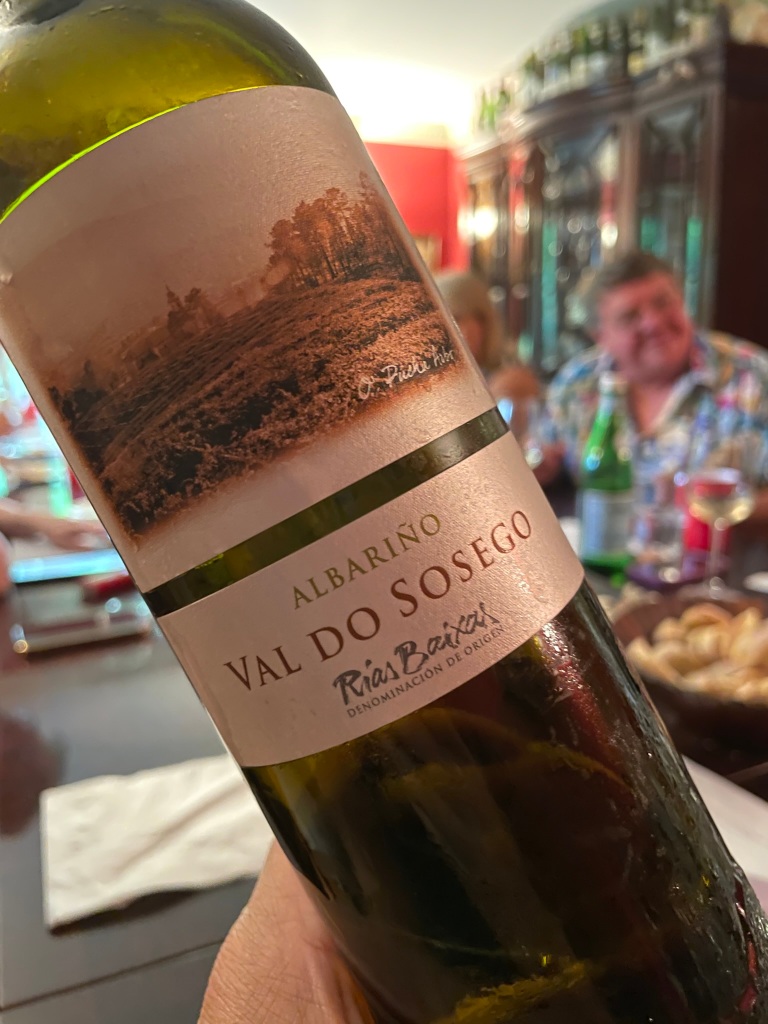
7. 2021 Willowcroft Vineyards (grown and made in Loudoun, Virginia): Softer and approachable. White peach notes. Crisp and clean. We felt this would also be a very food-friendly wine. Overall the favorite of this round.
8. 2021 Cana Vineyards (grown and made in Greenstone Vineyards, Loudoun, Virginia): Not a lot of depth; in fact it was almost Sauv Blanc-y in body. We found grapefruit notes with some salinity. One of the lightest Albariños of the evening.
9. 2020 Val Do Sosego (grown and made in Rías Baixas, Spain): “Bite-y” was Mark’s favorite descriptor. This wine was more mineral driven, and went exceptionally well with the shrimp dish we were sampling.
Flight 4:



10. 2021 Wisdom Oak Vineyards (grown and made in Central Virginia, Monticello AVA): Apple on the nose. Some felt there was a smoky quality to it. Lime zest and stone fruit on the palate. It was also noticeably lower in acid than the others, which made it exceptionally quaffable.
11. 2021 Old Westminster Home Vineyard (grown and made in Maryland): Very aromatic, reminiscent of ‘cat pee’ in Sauvignon Blanc. This was one of the most different wines of the evening, as it was made using native yeast fermentation. Very flowery nose…fennel maybe? One mentioned it had an herbal quality to it, plus notes of lime.
Although wines made with native yeast are usually very obvious, this one didn’t taste like it. Even so, it didn’t come across like a ‘traditional’ Albariño.
12. 2020 Bagoa do Mino Rias Baixas (grown and made in Rías Baixas, Spain): This was our favorite Spanish wine of the night. Richer and more balanced than its counterparts. Softer & rounder was mentioned. Also very quaffable, with or without food.
Flight 5:



13. 2020 Blenheim Vineyards (grown and made in Central Virginia, Monticello AVA): In my opinion one of the top contenders of the night. It also had one of the prettier aromas of the evening, with lots of orange peel.
We had plenty of tasting notes for this wine. Most participants noted it was crisp and spicy. Some detected notes of lime, white peaches, maybe lemon. The wine had medium acidity and had a juicy quality to it.
14. 2020 Garzon Reserva Albariños (grown and made in Uruguay): This Uruguayan wine was another favorite of the evening, stylistically-speaking more in line with Virginia than with Spain.
Fruit forward. Notes of jasmine and white peach, with a ginger heat on the back end. This and the Blenheim were close contenders for round favorites.
15. 2019 Chrysalis Vineyards (grown and made in Loudoun, Virginia, Middleburg AVA): The ‘verde’ label on the bottle was an accurate descriptor, since this was definitely made in a lighter style. Light and very lively. There wasn’t a lot of finish but very good front end.
Flight 6:



16. 2020 Nordica Alvarinho (grown and made in Minho, Portugal): Another one that was ‘ocean in a glass.’ The salinity was very pronounced, with an almost sweet-note to it. Grape fruit on the palate. Very easy drinking.
17. 2021 Old Westminster Winery, Maryland (grown and made in Maryland): This was a late-add so very few notes. Flinty, mineral notes. Lemon oil quality to it.
18. 2020 Palacio de Fefinanes (grown and made in Rías Baixas, Spain): Apricot on the nose, honey finish. Someone said the nose was reminiscent of amaretto. Citrusy/lime quality, more mineral than saline. Several mentioned it was their favorite Spanish wine, although overall people seemed to favor the Nordica.
What did we learn?
Of the 12 Virginia or Maryland Albariños that were sampled, most tasted varietally correct but still diverged from their Spanish counterparts. Nearly all the Virginia wines trended towards notes of stone fruit, especially yellow or white peach. Most had more traditional lime-zest flavors. Several had notes of melon. Two had an almost Sauvignon Blanc quality to them.
The greatest difference between local Albariños and Spanish ones were the local examples were far more approachable. While Albariño’s traditional saline quality was often there in Virginia wines, it wasn’t to the same degree as the ones from Spain. A few were made in a fresher style where the salinity was entirely absent.
The Spanish and one Portuguese Albariños tended to have more bite to them. Most had a high saline quality to them, with one being full-on salty. Two were more mineral driven. Interestingly enough the Bagoa do Mino was our favorite, and noticeably easier-drinking than the others.
This Uruguayan wine was another favorite of the evening, more in line stylistically-speaking with Virginia than Spain. Although its tasting notes were distinct, it likewise had an easy-drinking, moderate saline quality to it.
Maybe our audience had acquired a “Virginia palate”, but the results were clear – the more approachable wines were more popular, and those disproportionally came from Virginia.
Picking a favorite for the evening was difficult, but a poll of the other participants revealed the top-5 choices usually included the 2020 Maggie Malick Albariño, 2021 October One, 2020 Blenheim, Uruguay’s 2020 Garzón, and Spain’s 2020 Bagoa do Mino. Honorable mentions went to the 2021 Wisdom Oak, 2020 Portuguese Nordica, and 2020 Maggie Malick Reserva.


























